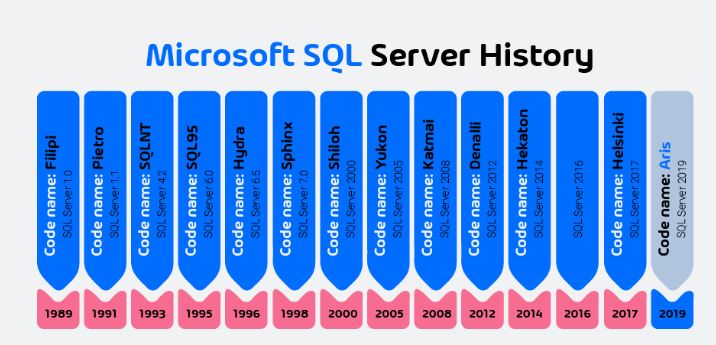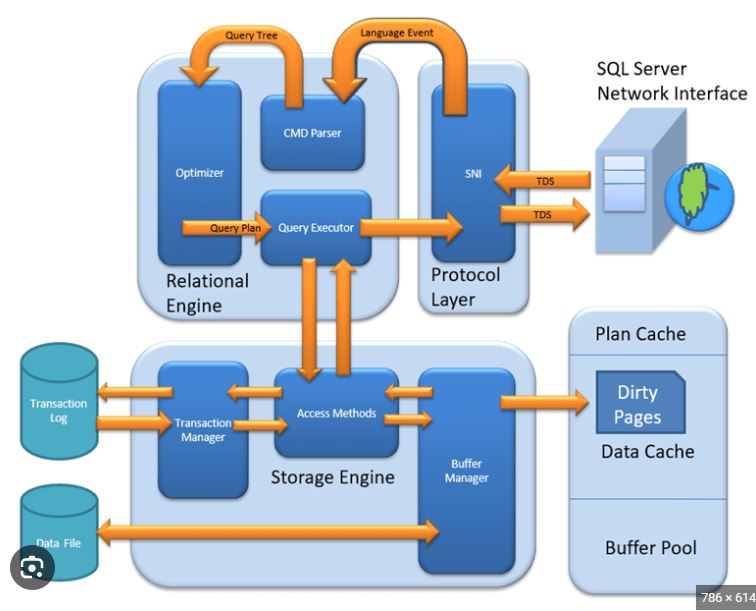Archive
Overview of SQL Server and its components

SQL Server is a powerful relational database management system developed by Microsoft. It is used by businesses and organizations of all sizes to store and manage their data. In this article, we will provide an overview of SQL Server and its components.
What is SQL Server?
SQL Server is a software platform for creating and managing databases. It is designed to be highly scalable, secure, and reliable. SQL Server provides a range of features for managing data, including support for transactions, referential integrity, and data replication.
SQL Server is available in several editions, each of which is tailored to the needs of different types of users. The editions range from the free Express edition to the enterprise-level Datacenter edition. The different editions vary in terms of the number of processors they support, the amount of memory they can utilize, and the features they offer.
SQL Server Components
SQL Server consists of several components, each of which serves a specific purpose in the data management process. Here are the key components of SQL Server:
- SQL Server Database Engine: The SQL Server Database Engine is the core component of SQL Server. It is responsible for storing, processing, and retrieving data. The Database Engine consists of two main components: the Database Management System (DBMS) and the Database Engine.

The DBMS is responsible for managing the physical storage and retrieval of data. It manages the allocation and deallocation of disk space, as well as the organization of data on the disk. The Database Engine, on the other hand, manages the logical operations that are performed on the data. This includes operations like querying, indexing, and sorting data.
- Analysis Services: Analysis Services is a component of SQL Server that enables users to analyze and model their data for better decision-making. It includes tools for data mining, data analysis, and data visualization.
- Integration Services: Integration Services is a platform for building and deploying data integration solutions. It includes tools for extracting, transforming, and loading data between different systems.
- Reporting Services: Reporting Services is a platform for creating and deploying reports that can be accessed by users via a web browser or a mobile device. It includes tools for designing, publishing, and managing reports.
- Master Data Services: Master Data Services is a component of SQL Server for managing master data, which refers to the data that represents the core business entities of an organization. It includes tools for creating, managing, and governing master data.
SQL Server Tools
SQL Server comes with several tools for managing and working with data. Here are some of the key tools:
- SQL Server Management Studio (SSMS): SSMS is a graphical user interface tool for managing SQL Server. It provides a range of features for managing databases, users, and permissions, as well as for writing and executing SQL queries.
- SQL Server Data Tools (SSDT): SSDT is an integrated development environment for building and deploying SQL Server databases. It provides a range of features for designing database schemas, creating queries, and deploying databases.
- SQL Server Profiler: SQL Server Profiler is a tool for monitoring and analyzing the performance of SQL Server. It allows users to capture and analyze SQL Server events, such as queries, stored procedures, and transactions.
Conclusion
SQL Server is a powerful and versatile database management system that offers a wide range of features for managing data. Its components and tools make it easy for businesses of all sizes to store, manage, and analyze their data. Whether you are a small business owner or a large enterprise, SQL Server can provide you with the tools you need to manage your data effectively.
SQL Server Basics series
Hello Dear Reader, we would be starting an SQL Server basics to Advance series and will be covering below topics .
Article 1: Introduction to SQL Server Administration
- Overview of SQL Server and its components
- Installation and setup of SQL Server
- Creating and managing databases
- User and permission management
- Backup and recovery strategies
- Monitoring and troubleshooting SQL Server
Article 2: Managing Data in SQL Server
- Data types and schema design
- Creating and managing tables, views, and indexes
- Data manipulation with SQL statements (SELECT, INSERT, UPDATE, DELETE)
- Data normalization and denormalization
- Bulk import and export of data
- Transactions and locking
Article 3: Performance Tuning in SQL Server
- Understanding query execution plans
- Identifying and resolving performance bottlenecks
- Indexing strategies and best practices
- Query optimization techniques
- Monitoring and tuning server resources (CPU, memory, disk I/O)
- Performance troubleshooting and tuning
Article 4: High Availability and Disaster Recovery in SQL Server (5000 words)
- Introduction to high availability and disaster recovery (HA/DR) concepts
- Implementing database mirroring, log shipping, and replication
- Configuring failover clustering and availability groups
- Backing up and restoring databases for disaster recovery
- Testing and maintaining HA/DR solutions
- Business continuity planning and best practices
Article 5: Advanced SQL Server Administration Topics
- Advanced security and encryption features
- Managing large databases and data warehouses
- Integration with other systems (SSIS, SSRS, Power BI)
- SQL Server in the cloud (Azure SQL Database, AWS RDS)
- Extending SQL Server with custom code (CLR, PowerShell, T-SQL)
- Performance and scalability considerations for large-scale deployments